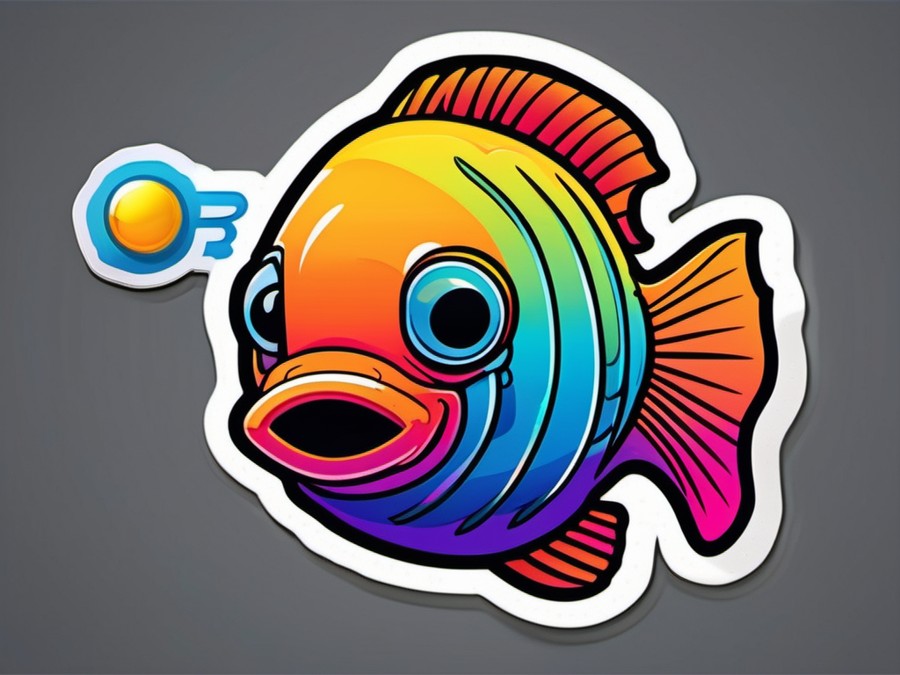· Charlotte Will · Fish Finders & Depth Finders · 8 min read
What is Side Imaging on a Fish Finder?
Discover how side imaging on a fish finder can transform your fishing experience. Learn about its mechanics, benefits, and how to utilize it effectively for enhanced fish detection and better understanding of underwater terrain. Stay ahead with the latest trends and troubleshoot common issues. Perfect for anglers seeking to maximize their fishing adventures.

Ever wondered what the fuss about side imaging is all about in fish finders? As a keen angler, you’ve likely come across this technology while browsing for the latest fishing gadgets. Let’s dive in and explore what side imaging on a fish finder is, how it works, its benefits, and much more. By the end of this article, you’ll be equipped with all the knowledge you need to make informed decisions about your fishing electronics.
Introduction to Side Imaging Technology
Side imaging is a game-changer in the world of fishing. It’s like having eyes underwater to scout for fish and navigate through uncharted territories. Unlike traditional sonar that focuses directly beneath the boat, side imaging sends out signals to the sides of your vessel. This gives you a panoramic view of what’s happening under the water’s surface.
How Side Imaging Differs from Traditional Sonar
Traditional sonar works by sending a single beam directly downwards, providing a vertical slice of the water column beneath your boat. While effective, it’s limited to what lies directly below you. Enter side imaging—this advanced technology allows your fish finder to send out side-to-side scans, creating a detailed map of the surrounding underwater environment.
Brief History of Side Imaging in Fishing
Side imaging technology has been around for a while, but it’s only recently become mainstream. Early versions were bulky and expensive, making them inaccessible to average anglers. However, with advancements in technology, these devices have become more compact and affordable, making them a staple in many fishing setups.
Understanding the Mechanics of Side Imaging
So, how does side imaging actually work? Imagine it as a sophisticated underwater camera. The fish finder uses sonar waves to create an image of what’s below and around your boat. This process involves several key components:
How Does Side Imaging Work?
- Transducer Activation: The transducer, typically mounted on the boat’s hull or transom, sends out sonar waves.
- Underwater Reflection: These waves bounce off underwater objects like fish, structures, and terrain.
- Data Collection: The returning waves are then interpreted by the fish finder, creating a visual representation on your screen.
- Real-Time Display: This data is displayed in real time, allowing you to see instantly what’s around your boat.
The Role of Transducers in Side Imaging
Transducers are the heart of any fish finder. They convert electrical energy into sonar waves and vice versa. In side imaging, dual-beam transducers are often used because they can send multiple signals at once—one downwards and the other sideways. This dual-beam approach ensures you don’t miss anything critical under or beside your boat.
Advantages of Side Imaging in Fishing
Now that you understand the basics, let’s explore why side imaging has become indispensable for many anglers:
Enhanced Fish Detection
With side imaging, you can spot fish that traditional sonar might miss. Whether they’re hanging out near structures or hidden in vegetation, side imaging will help you find them. This wider field of view is particularly beneficial in areas with scattered fish populations.
Better Understanding of Underwater Terrain
Imagine trying to navigate a city without Google Maps. That’s what fishing without side imaging can feel like. Side imaging gives you a clear understanding of the underwater landscape, helping you locate promising spots where fish might be lurking.
Improved Fishing Strategies
With a comprehensive view of what’s beneath and around your boat, you can refine your fishing strategies. You’ll know exactly where to cast and how to approach different fish species based on their behavior patterns.
Side Imaging vs Down Imaging
Both side imaging and down imaging have their places in modern fishing, but they serve different purposes. Let’s compare the two:
Key Differences Between the Two Technologies
- Scope of Coverage: Side imaging provides a wider, more panoramic view, while down imaging focuses on the area directly beneath your boat.
- Detail Resolution: Down imaging often offers higher detail resolution, making it ideal for close-up inspections of fish and structures.
- Use Cases: Side imaging is excellent for scouting large areas, whereas down imaging is better for precise target identification.
When to Use Each Type of Imaging
- Side Imaging: Perfect for broad coverage when you’re fishing in new areas or want to survey a wide stretch of water.
- Down Imaging: Ideal for pinpointing specific fish targets or structures you’ve identified with side imaging.
For more on how to choose the best fish finder for your specific needs, you might want to check out our guide on What is the Best Fish Finder for Kayaks?.
How to Use Side Imaging Effectively
So, you’ve decided side imaging is for you. Great! Now let’s talk about how to make the most of this powerful tool:
Setting Up Your Fish Finder for Side Imaging
- Mount the Transducer Properly: Ensure it’s secure and positioned correctly on your boat.
- Calibrate the Device: Follow manufacturer instructions to calibrate for optimal performance.
- Adjust Settings: Tweak the settings based on water depth and conditions to get the best readings.
Interpreting Side Imaging Data
Reading side imaging data is like learning a new language. You need to interpret different shapes, sizes, and colors to understand what you’re seeing. Typically:
- Bright Colors indicate higher density objects like schools of fish or structures.
- Darker Areas might show empty spaces or vegetation.
Advanced Techniques with Side Imaging
Experienced anglers often use side imaging in conjunction with other technologies like GPS and CHIRP for even more precise fishing. For instance, combining side imaging with CHIRP technology can give you unparalleled clarity and detail.
Real-Life Stories: How Side Imaging Changed Fishing
Stories from the fishing community highlight the transformative power of side imaging. Take one example:
Personal Anecdote of Discovering a New Fishing Spot
I remember one trip where I was convinced there were no fish in the area. But with side imaging, I spotted a large school of bass hiding near a submerged tree. This discovery not only led to a great catch but also revealed a hot spot I visit regularly now.
Community Experiences with Side Imaging
Forums and reviews are filled with similar success stories. Anglers report finding hidden structures, locating fish in surprising places, and even salvaging trips that seemed doomed.
Choosing the Best Side Imaging Fish Finder
With so many options available, selecting the right side imaging fish finder can be overwhelming. Here are some features to look for:
Top Features to Look For in a Side Imaging Fish Finder
- High-Resolution Display: A clear, high-resolution screen makes interpreting data easier.
- Dual-Beam Transducers: For the best of both worlds—side and down imaging.
- GPS Integration: Helpful for marking spots and navigating back to them.
- Customizable Settings: Allows you to tailor the device to your fishing environment.
- Durability: Especially important if you’re fishing in harsh conditions.
Recommended Side Imaging Fish Finders for Beginners
If you’re new to side imaging, consider models that offer a balance of features and affordability. Look for:
- User-Friendly Interfaces to make learning easier.
- Good Battery Life, so you don’t run out of juice mid-trip.
Advanced Fish Finders for Experienced Anglers
For those seeking the top-tier experience, higher-end models offer advanced features like:
- Higher Wattage Transducers for deeper penetration.
- Networking Capabilities to connect with other devices on your boat.
Troubleshooting Common Issues with Side Imaging
Even the best technology can face hiccups. Here’s how to deal with some common issues:
Dealing with Blurry or Unclear Images
- Check Transducer Placement: Ensure it’s secure and properly aligned.
- Calibrate Regularly: Adjust settings based on water conditions.
- Update Software: Make sure you’re running the latest software for optimal performance.
Ensuring Accurate Depth Readings
- Calibrate with Water Temperature: Different temperatures can affect readings.
- Avoid Interference: Keep away from other electronic devices that might interfere with signals.
- Maintain Transducer: Keep it clean and free of barnacles or debris.
The Future of Side Imaging in Fishing
As technology continues to advance, side imaging is set to become even more sophisticated. Here are a few trends to look out for:
Emerging Trends and Technologies
- AI Integration: Artificial intelligence could help analyse data more accurately.
- Enhanced Resolution: Higher resolution displays and transducers for even clearer images.
- Portable Devices: More compact, portable side imaging devices for versatile use.
How Anglers Can Stay Ahead
- Stay Informed: Follow industry news and updates.
- Community Engagement: Join forums and groups to share tips and experiences.
- Experimentation: Don’t be afraid to try new things and push the boundaries of your fishing tech.
Conclusion
Side imaging on a fish finder isn’t just a fancy feature; it’s a game-changer that can dramatically improve your fishing experience. Whether you’re a seasoned angler or just starting out, integrating side imaging into your toolkit can lead to more successful trips and exciting discoveries. So, gear up, dive in, and let the adventure begin!
Frequently Asked Questions
Q1: Can side imaging work in shallow water?
Absolutely! Side imaging works effectively in shallow waters. It’s actually quite useful for spotting fish and structures close to the surface.
Q2: Is side imaging necessary for all types of fishing?
While not absolutely necessary, side imaging can greatly enhance your fishing experience. It’s especially beneficial in scenarios where you need to cover a larger area or navigate complex underwater terrain.
Q3: How often should I update my fish finder software?
Updating your fish finder software regularly ensures you have the latest features and bug fixes. Manufacturers often release updates that improve performance and compatibility, so it’s good practice to update at least once a year.
Q4: What is the best depth range for side imaging?
The optimal depth range for side imaging can vary based on the specific model and transducer. Generally, higher-end models offer deeper penetration—sometimes up to 150 feet or more. Always check the manufacturer’s specifications for the best results.
Q5: Can side imaging be used in freshwater and saltwater?
Yes, modern side imaging technology is versatile enough to be used in both freshwater and saltwater environments. Just make sure your fish finder is rated for the type of water you’ll be fishing in.




